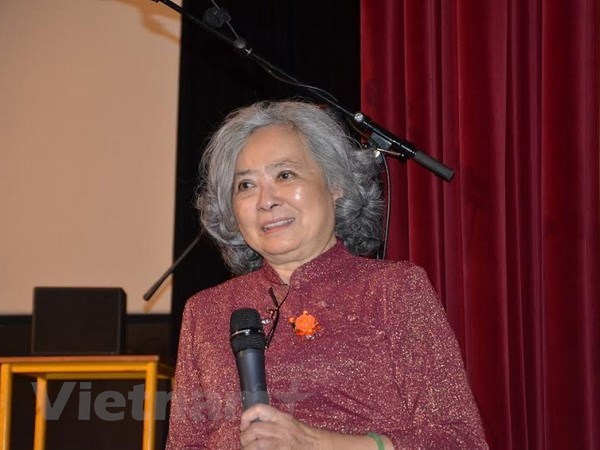who had filed a lawsuit against 26 US chemical firms for producing chemical toxins sprayed by the US army in the war in Vietnam, causing serious consequences for the community, her children and herself.
 |
|
Vietnamese-French Tran Thi To Nga in a dialogue on the impacts of Agent Orange in Paris (Photo: VNA) |
The Crown Court of Evry city in the suburb of Paris, where Nga filed the lawsuit in May 2014, has decided to open trial on the case on October 12.
In the letter, Rinh affirmed that the VAVA, with its mission to support and protect the legitimate rights and interests of AO/dioxin victims, will always accompany Nga. So far, the association has collected 416,200 signatures of its members and people with good will in support of the lawsuit.
He expressed his hope that the French court will uphold justice for Nga and her family.
In May 2014, Nga, born in 1942, filed the lawsuit. On April 16, 2015, the Evry court held the first hearing on the case, but since then, lawyers of the sued chemical companies tried every way to prolong the procedures.
Tran To Nga graduated from a Hanoi university in 1966 and became a war correspondent of the Liberation News Agency, now the Vietnam News Agency. She worked in some of the most heavily AO/Dioxin affected areas in southern Vietnam such as Cu Chi, Ben Cat and along the Ho Chi Minh Trail, ultimately experiencing contamination effects herself.
Among her three children, the first child died of heart defects and the second suffers from a blood disease.
In 2009, Nga, who contracted a number of acute diseases, appeared as a witness at the Court of Public Opinion in Paris, France against the US chemical companies.
From 1961-1971, US troops sprayed more than 80 million litres of herbicides—44 million litres of which were AO, containing nearly 370 kilograms of dioxin—over southern Vietnam.
As a result, around 4.8 million Vietnamese were exposed to the toxic chemical. Many of the victims have died, while millions of their descendants are living with deformities and diseases as a direct result of the chemical’s effects.-VNA